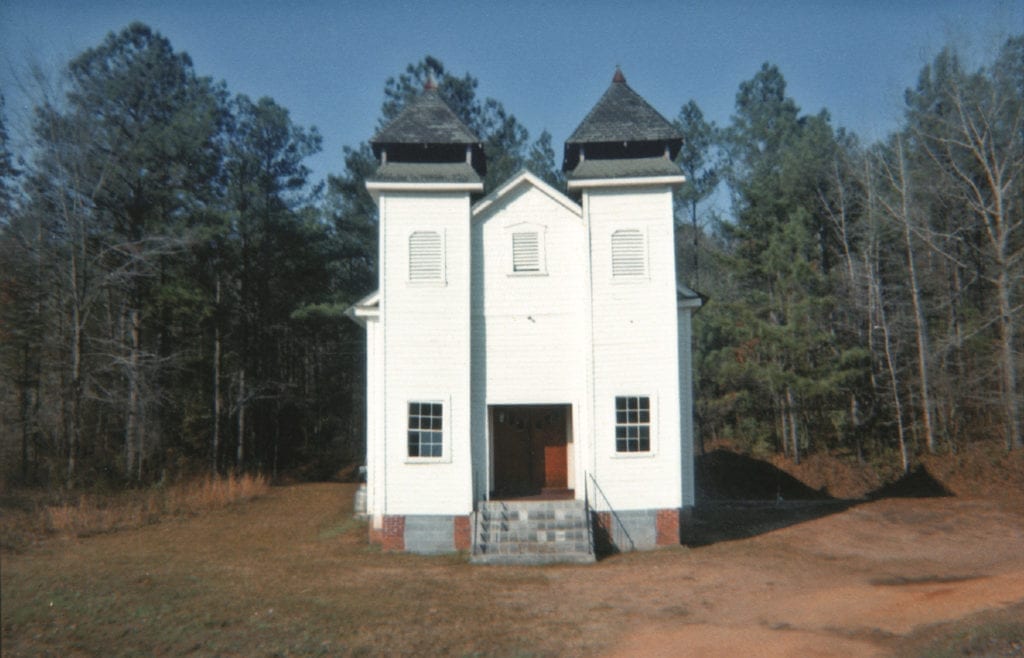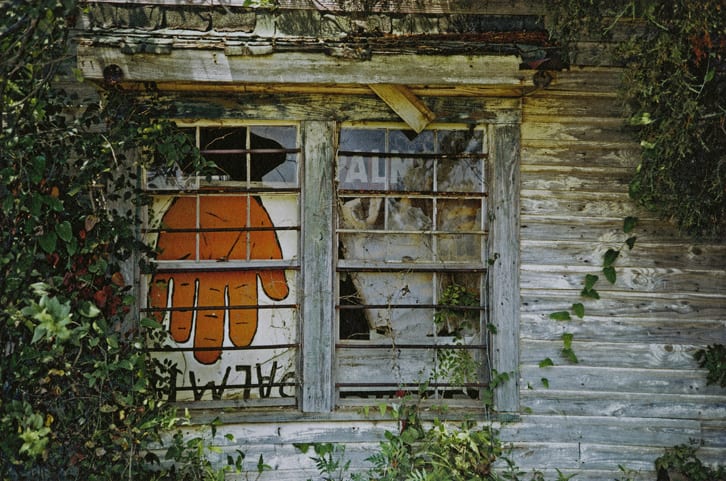One of the most profound American photographers of his generation, Christenberry is best known for his poignant, poetic landscapes of his native Alabama, capturing the South’s great fading buildings, signs and relics of a bygone era.
Born November 1936, in Tuscaloosa, Alabama, Christenberry studied art at the University of Alabama, where he received a BFA and MFA in painting.
After graduating, he began an artistic career in New York City, where he came across Let Us Now Praise Famous Men, the iconic tome in which James Agee describes in prose, and Walker Evans in photographs, the experience of living among the poor farming families of Hale County during the Great Depression. Evan’s images made a deep impression on Christenberry, and the pair subsequently became lifelong friends until Evans’s death in 1975.
From then on, the South became Christenberry’s medium, and in 1968, he began annual pilgrimages to Hale County, Alabama, recording the changing appearance of the region’s natural landscape and vernacular architecture in diverse formats and media.
“I find beauty in things that are old and changing, like we all are changing,” he told historian and folklorist William R. Ferris in a 1982 interview. “I find old things more beautiful than the new, and I go back to them every year until sooner or later they are gone. They have blown away, burned, fallen down or … disappeared.”
Recognised as a pivotal figure of 20th-century American photography, Christenberry used colour film at a time when serious photography was synonymous with black-and-white, and processed his rolls of film at the local drugstore.
In many ways an accidental photographer, he went on to become an incredibly influential one, a pioneer who helped shape the idea, in the late 1970s, that colour photography could be art.

Southern in context, universal in nature, his main body of work speaks of life, aging, wearing away. His vivid colour photographs of rusted signage, austere old churches, and the weathered exteriors of structures present, with formal simplicity, a prolonged study of place that chronicles the passages of time with haunting intimacy.
In an interview with American Suburb X, Christenberry spoke of his enduring fascination with the rural South:
“This is and always will be where my heart is. It is what I care about. Everything I want to say through my work comes out of my feelings about that place–its positive aspects and its negative aspects. It’s one of the poorest counties in the state, but it is also a county with great lore and legend.”

He held teaching positions at the Corcoran College of Art and Design, Washington, D.C., Memphis State University, and the University of Alabama, Tuscaloosa. Christenberry’s work belongs to numerous collections, including the Museum of Modern Art, New York; the National Museum of American Art, Washington, D.C. and the Whitney Museum of American Art, New York.
